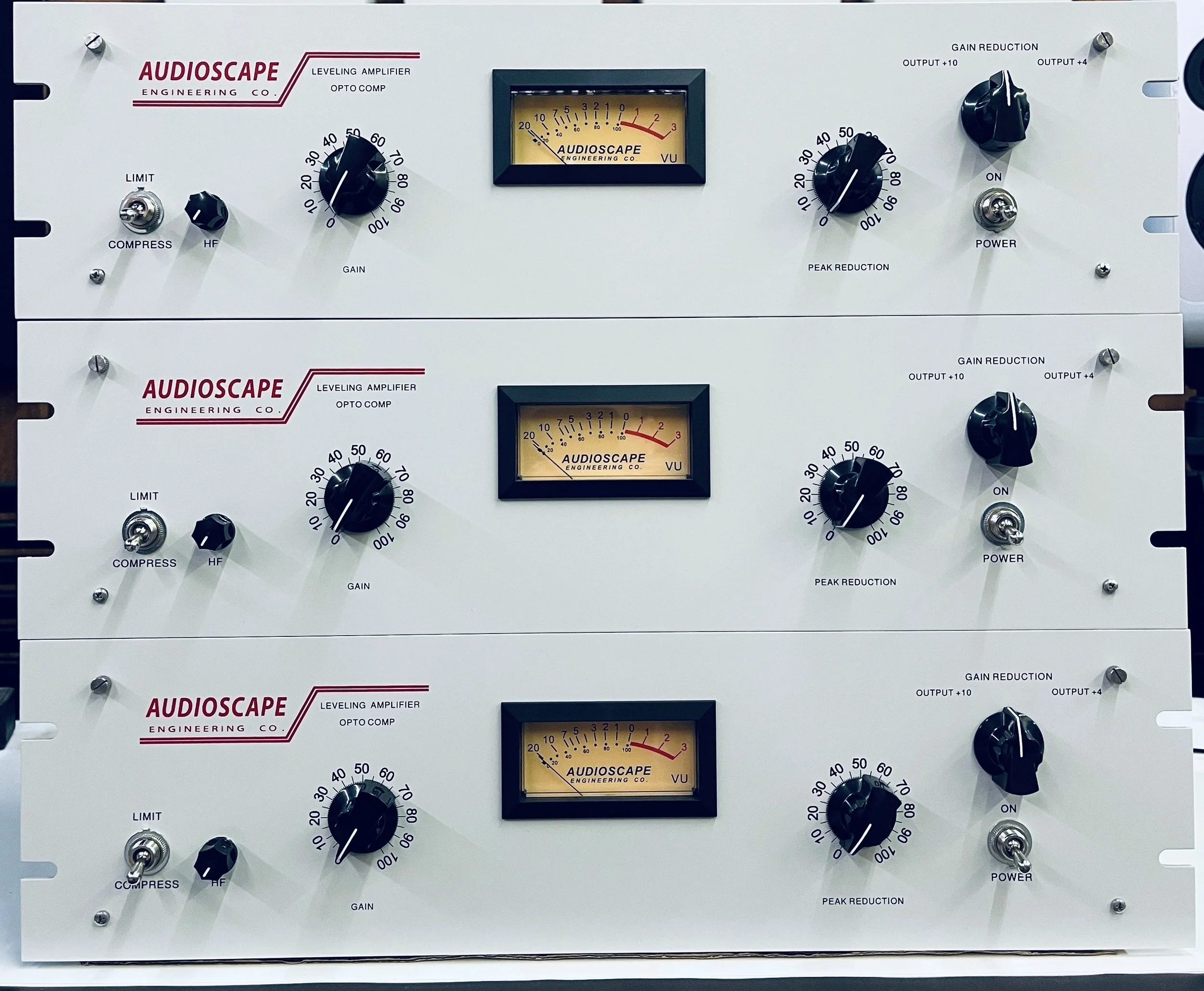AudioScape ASA-6A
Variable‑mu Compressor
Published November 2025
AudioScape’s take on the classic RCA valve compressor is much more than just a clone...
Measuring a staggering five rack units tall, this behemoth, single‑channel valve compressor undeniably has one of the poorest height‑to‑channel‑count ratios! And with nine valves and five transformers employed in the design, the AudioScapeASA‑6A will probably not win any medals when it comes to efficiency either. So you’d hope that what might appear to be an absurdly over‑the‑top design can cast some sort of magic on your audio. Does it manage to do that? Let’s find out...
The word “iconic” gets thrown around pretty loosely in the world of vintage pro audio, where nearly every analog dynamics processor made before 1979 is attended to like a holy relic.
Tomorrow marks one year since we announced the MK-609, our painstakingly recreated replica of the original Neve metal knob 33609.
The 33609 has long been near the top of the list of most requested units, so we knew if we were going to take it on, we were going to do it right. In the end, it took nearly four years of meticulous R&D to bring this British classic to life. Much of that time was spent tracking down rare, obsolete, and in some cases nearly unobtainium NOS parts to build the most authentic 33609 circuit possible in the 21st century.
In fact, in addition to being one of the most complicated builds to design, build, and calibrate in QC, the MK-609 may have the most rare NOS parts of any of our units. It took literally years of scouring the US and UK surplus market to find all of these. However, this step was absolutely essential to building a truly authentic 33609. Here are a few examples:
It’s been a crazy month, and we’ve received a lot of emails from folks asking for a little more time as paychecks and income from sessions come in. (We’ve been inundated- if you haven’t been replied to yet, please know you will be!)
In the meantime, we’ve found a temporary solution we hope will work for everybody. Our projected price increases, as stated in our last newsletter, will be cut in half for the month of August. Come September, we’ll raise them to the full amount in our projected price list. We’re hoping this gives a little extra time to everyone who needs it. We truly are trying our best to meet all of you where we can, and keep bringing you kickass gear.
As a reminder: we now have small shipping costs added for our US customers starting this month. They range from $7.50 to $25 based on product size and weight. Those may eventually have to go up as well, but we are starting as small as we can.
Below is the updated base pricing for August only…
UPDATED: 07/25/2025
As many of you have heard by now, we are looking at an across-the-board price increase for our products. Over the years, we have truly tried to keep our prices as low as humanly possible, even as costs have steadily increased. (A lot of our products are still at 2016-2019 pricing, if not lower in some cases.) In today’s climate, with just about everything under the sun increasing in cost, it simply isn’t sustainable (or responsible) to keep them at the same pricing. These increases will take effect August 1st.
This week, we honor the beginnings of the great Westinghouse Electric and Manufacturing Company, which officially took its name on June 13, 1886. Founded nearly one hundred and forty years ago, it’s considered - along with General Electric and RCA - to be one of the most significant US electric technology firms ever established. The distinctive Westinghouse “W” logo finds its way into many of our units to this day, as it one of the most reliable brands for high quality NOS tubes!
One of the most iconic and desirable hardware units in studios the world over, the Pultec® (shortened from Pulse Techniques) EQP-1A passive equalizer has been making a name for itself ever since its release in the 1950s!
History & Founding of Pulse Techniques
Pulse Techniques, the company that would go on to produce a whole line of legendary tube equalizers, was founded by Eugene Shenk and Ollie Summerlin in Februrary 1953. Operating out of a 1200 square foot facility in New Jersey, the two had just one other full-time employee, Peter Menti, for the entire 29 years it was officially in business!
Memorial Day is the day we honor the brave men and women of the US Armed Forces who put service before self, and made the greatest sacrifice.The folks who gave their lives defending our country. Most of the time, the work of the military is transparent to civilian Americans, as it should be, but without their tireless vigilance, life here could be much different. Memorial Day is also a time to honor our veterans and those serving today. At AudioScape, we have, among our amazing craftspeople and support staff, some treasured veterans that have served their country, putting service before self, and we’re grateful for them.
As a way of showing our gratitude for service, we offer Military Discounts to active service members and veterans. We know things can be tight on a budget and this is one small way we can give something back. If this applies to you, please let us know at info@audio-scape.com before completing a purchase, and we will make sure your discount is included.






